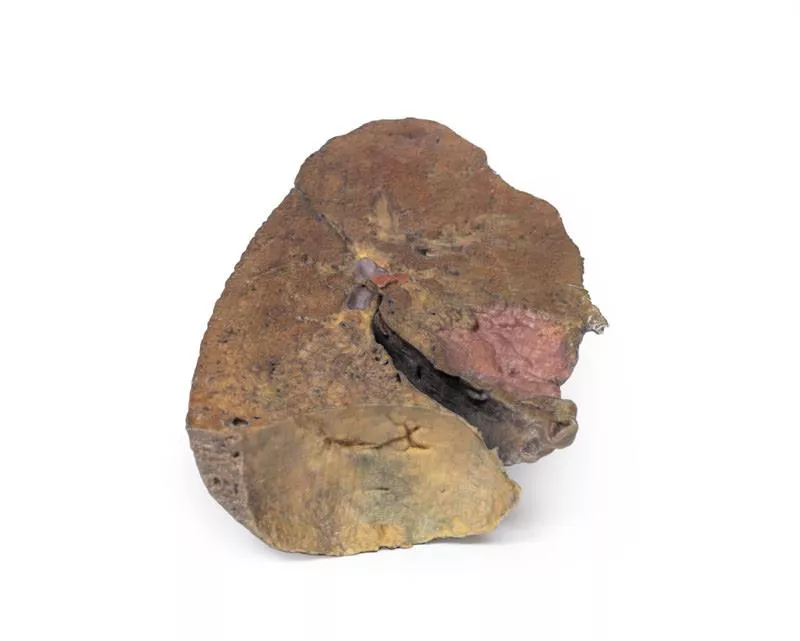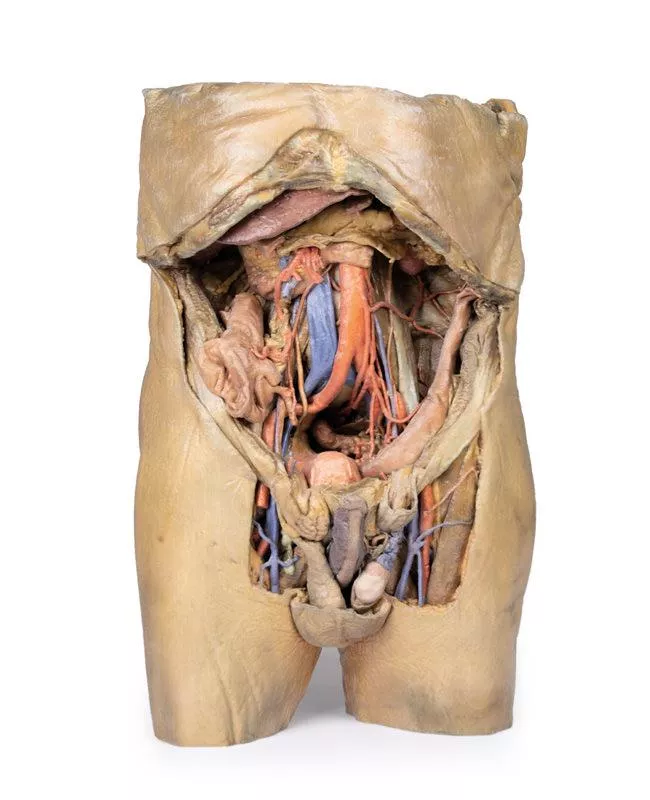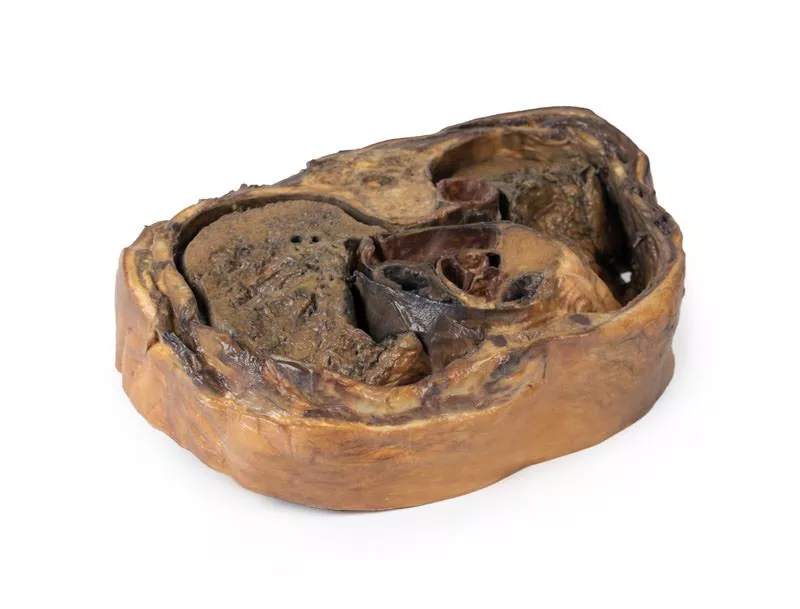Product information "Thorax with heart and vessels"
This highly detailed 3D model depicts the key anatomy of the superior thoracic aperture, mediastinum, and adjacent neck and thoracic structures, with both clavicles and select muscular and venous elements removed to enhance visibility and educational impact.
Anatomical Highlights:
Superior Thoracic Aperture:
- Trachea visible at the top, with a robust ring of cartilage.
- Rib 1 exposed from lateral to medial, including insertion of the anterior scalene muscle.
- Removal of clavicles allows unobstructed views into the upper thoracic corridor.
Vascular Anatomy:
- Right subclavian artery, situated above rib 1, gives rise to the thyrocervical trunk.
- Left subclavian artery, also above rib 1, branches into the suprascapular artery.
- Both common carotid arteries are visible; the left carotid sheath includes the left vagus nerve.
Nervous System:
- Left vagus nerve follows the left carotid artery within the carotid sheath; left recurrent laryngeal nerve loops under the aorta.
- Right vagus nerve and right phrenic nerve retracted during dissection; left phrenic nerve remains anterior to the heart, tracing to the diaphragm.
- Elements of the left brachial plexus are visible—from roots to trunks—including the dorsal scapular nerve.
Mediastinal & Cardiac Orientation:
- Arch of the aorta, with brachiocephalic trunk, left common carotid, and left subclavian artery, sits just above the heart.
- Pulmonary trunk emerges immediately superior to the heart.
- Left anterior descending artery (LAD) courses along the anterior heart surface.
- Superior vena cava lies to the right and posterior to the ascending aorta.
- Right phrenic nerve positioned posteriorly to the heart; left phrenic nerve runs in its connective tissue anteriorly.
Inferior Thorax & Diaphragm:
- Ribs 8–12 and associated external intercostal musculature visible; muscle fibers run inferomedially into fascial layers.
- Right hemidiaphragm sits higher than the left, reflecting the presence of the liver beneath.
Applications & Benefits
Clinical Relevance:
Ideal for visualizing neck and thoracic anatomy relevant to cardiovascular, respiratory, and nerve-related procedures, including laryngeal, thoracic, and brachial plexus surgery.
Educational Utility:
Offers a clean, accessible view of mediastinal compartments, vascular pathways, and nerve trajectories without obstruction by bone or superficial structures.
Enhanced Learning:
The model’s clarity supports instruction in radiographic interpretation, thoracic surgical approaches, and anatomy exams.
Anatomical Highlights:
Superior Thoracic Aperture:
- Trachea visible at the top, with a robust ring of cartilage.
- Rib 1 exposed from lateral to medial, including insertion of the anterior scalene muscle.
- Removal of clavicles allows unobstructed views into the upper thoracic corridor.
Vascular Anatomy:
- Right subclavian artery, situated above rib 1, gives rise to the thyrocervical trunk.
- Left subclavian artery, also above rib 1, branches into the suprascapular artery.
- Both common carotid arteries are visible; the left carotid sheath includes the left vagus nerve.
Nervous System:
- Left vagus nerve follows the left carotid artery within the carotid sheath; left recurrent laryngeal nerve loops under the aorta.
- Right vagus nerve and right phrenic nerve retracted during dissection; left phrenic nerve remains anterior to the heart, tracing to the diaphragm.
- Elements of the left brachial plexus are visible—from roots to trunks—including the dorsal scapular nerve.
Mediastinal & Cardiac Orientation:
- Arch of the aorta, with brachiocephalic trunk, left common carotid, and left subclavian artery, sits just above the heart.
- Pulmonary trunk emerges immediately superior to the heart.
- Left anterior descending artery (LAD) courses along the anterior heart surface.
- Superior vena cava lies to the right and posterior to the ascending aorta.
- Right phrenic nerve positioned posteriorly to the heart; left phrenic nerve runs in its connective tissue anteriorly.
Inferior Thorax & Diaphragm:
- Ribs 8–12 and associated external intercostal musculature visible; muscle fibers run inferomedially into fascial layers.
- Right hemidiaphragm sits higher than the left, reflecting the presence of the liver beneath.
Applications & Benefits
Clinical Relevance:
Ideal for visualizing neck and thoracic anatomy relevant to cardiovascular, respiratory, and nerve-related procedures, including laryngeal, thoracic, and brachial plexus surgery.
Educational Utility:
Offers a clean, accessible view of mediastinal compartments, vascular pathways, and nerve trajectories without obstruction by bone or superficial structures.
Enhanced Learning:
The model’s clarity supports instruction in radiographic interpretation, thoracic surgical approaches, and anatomy exams.
Erler-Zimmer
Erler-Zimmer GmbH & Co.KG
Hauptstrasse 27
77886 Lauf
Germany
info@erler-zimmer.de
Achtung! Medizinisches Ausbildungsmaterial, kein Spielzeug. Nicht geeignet für Personen unter 14 Jahren.
Attention! Medical training material, not a toy. Not suitable for persons under 14 years of age.









































